Dams, Canals Kanto Area
Inbanuma Development
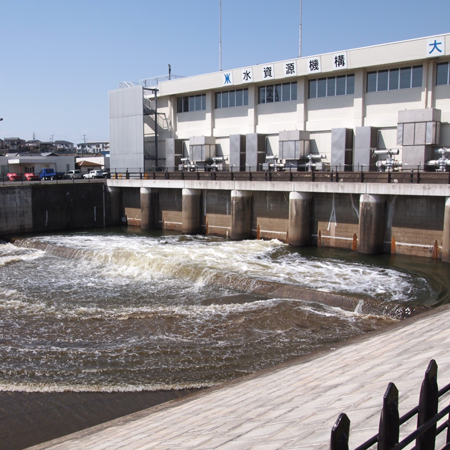
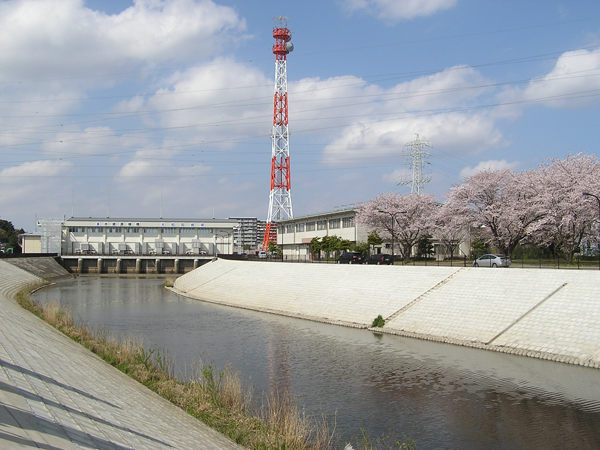
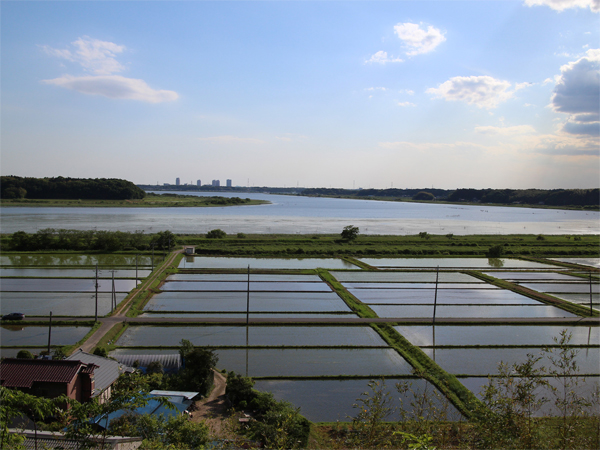

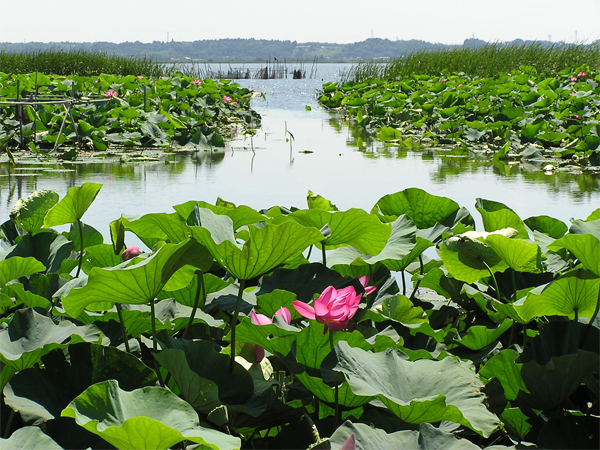
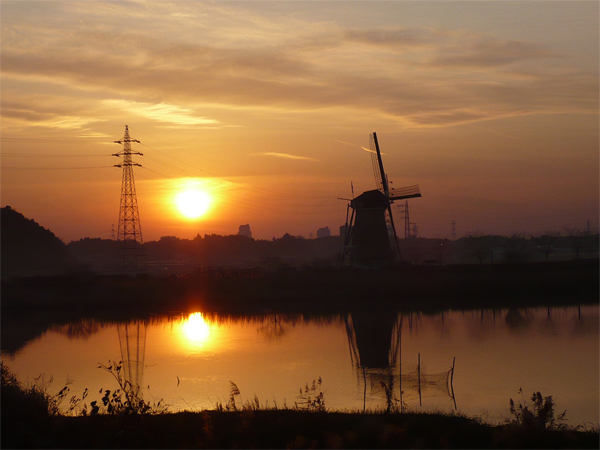
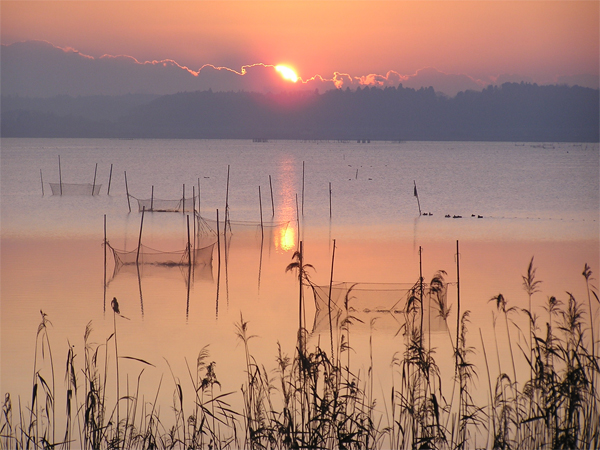
| Purpose |
|
|---|---|
| Benefited Area |
|
| Facilities | Inba Pumping Station (Total drainage discharge 92m³/s), Owada Pumping Station (Total drainage discharge 120m³/s) Sakanao Pumping Station (Total pumping discharge 20m³/s, Sakanao Watergate Bank short cut channel (Bank length:56.9km, Short cut channel: 3.8km) |
| Completion | 1968 |
| Details | The purpose of this project was 1) reclamation of Inba Pond, 2) supply of irrigation water to the existing coastal cultivated land and newly reclaimed land, and 3) intake of water for industrial use for Keiyo Industrial belt. Since the management start in April of 1968, operation of water regulation has been conducted to secure the water level of regulating pond at 2.50m at normal water level during the irrigation period, at 2.30m during non-irrigation period and also secure operation of flood water drainage in case of water level being exceeding the normal water level. |

Inbacchi-kun
Location
- Address
- Inzai City, Chiba Pref.
- Phone No.
- +81-47-483-0722
*Chiba Canal Integrated Operation and Maintenance Office
Access
Train and car
Approx.10 min. by car from Keisei-Usui sta. of Keisei Electric Railway Main Line
Approx.10 min. by car from Inba-Nihon-idai sta. of Hokuso Railway
Approx.10 min. by car from Inba-Nihon-idai sta. of Hokuso Railway
Tourist Spots
- Sakura Castle Ruins, Samurai Residences, and former Hotta Residence
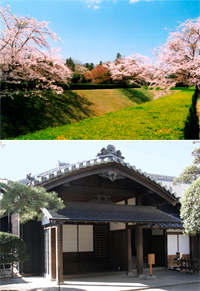 City of Sakura used to be the center of Shimofusa District as it worked as headquarters of Hotta Feudal Lord Clan. As it is closely located from Narita City where Tokyo International Airport is located and is about an hour ride by train from Ueno Station, this city attracts lots of visitors to the Sakura Castle ruins, which is now retained as a park. This park is about 20 minutes walk from Keisei Sakura Railway Station and 25 minutes from JR Sakura station. Though wooden structures including donjon are gone now, inside gardens of the castle is well organized and is kept in good order for a walk through the gardens regardless of the season. Other than the castle ruins, with a short walk from the edge of the castle is the area where three former Samurai residences are kept for viewing by the visitors. It is fun to imagine the life of Samurai in the late Edo period when you see the narrow inner gardens, tatami mat rooms, etc.
In addition, Kyu Hotta Residence located on the eastern side from the Samurai residences, provide you with another typical Japanese garden landscaping.
City of Sakura used to be the center of Shimofusa District as it worked as headquarters of Hotta Feudal Lord Clan. As it is closely located from Narita City where Tokyo International Airport is located and is about an hour ride by train from Ueno Station, this city attracts lots of visitors to the Sakura Castle ruins, which is now retained as a park. This park is about 20 minutes walk from Keisei Sakura Railway Station and 25 minutes from JR Sakura station. Though wooden structures including donjon are gone now, inside gardens of the castle is well organized and is kept in good order for a walk through the gardens regardless of the season. Other than the castle ruins, with a short walk from the edge of the castle is the area where three former Samurai residences are kept for viewing by the visitors. It is fun to imagine the life of Samurai in the late Edo period when you see the narrow inner gardens, tatami mat rooms, etc.
In addition, Kyu Hotta Residence located on the eastern side from the Samurai residences, provide you with another typical Japanese garden landscaping.
Photo by "Sakura City" HP
See more ->Sakura City- Inbanuma Sunset Hills Camping Ground
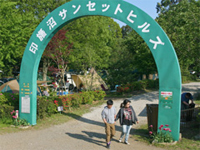 Inbanuma Sunset Hills is the camping ground facing the Inbanuma Lake. With hot bath facility is equipped, this site is convenient for auto camping, barbeque and tennis and other types of sport.
Inbanuma Sunset Hills is the camping ground facing the Inbanuma Lake. With hot bath facility is equipped, this site is convenient for auto camping, barbeque and tennis and other types of sport.
Photo by "Inbanuma Sunset Hills Camping Ground" HP
See more ->Inbanuma Sunset Hills Camping Ground (Only Japanese)- National Museum of Japanese History
- With a 15 minutes walk from Keisei Sakura Station, this National Museum of Japanese History houses and displays some 200,000 artifacts of historical importance and cultural value that together help to tell the story of Japan's past. As this museum boasts of varieties of display items, at least a half day visit is recommended. Those who are interested in the history of Japan can spend one day there. Besides, this museum is located at the western edge of Sakura Castle ruins. So combined visit to both the museum and the Sakura Castle ruins is recommended.
See more ->National Museum of Japanese History - Sakura Hometown Square
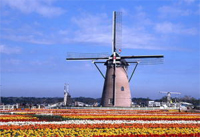 Sakura Hometown Square is located about 3km northwest of Keisei Sakura Station. What makes this square famous is a big flower garden. Especially, in the seasons of tulips in April, sunflowers in July, and cosmos flowers in October, a lot of flower funs come to this square with their families to have fun strolling on trails. The landmark of this square is the Netherland's windmill. This windmill "De Liefde" is named after the Netherland ship "De Liefde" to symbolize the good relationship between Japan and the Netherland. Actually the mechanical components of this windmill was made in the Netherland and was built there to commemorate the long-standing relations between those countries since the Edo Period. During the rein of the feudal lord Hotta Masayoshi, he promoted Dutch learning even though at that time, the Tokugawa Shogunate Government closed the doors for any contact from any foreign countries other than the Netherland. But the trade with Netherland was confined to the port of Nagasaki in Kyushu Island. Far from Kyushu, Hotta encouraged his subordinates to learn the things Dutch. Thanks to this early start of the relationship with the Netherland, the above windmill became the landmark of this square.
Sakura Hometown Square is located about 3km northwest of Keisei Sakura Station. What makes this square famous is a big flower garden. Especially, in the seasons of tulips in April, sunflowers in July, and cosmos flowers in October, a lot of flower funs come to this square with their families to have fun strolling on trails. The landmark of this square is the Netherland's windmill. This windmill "De Liefde" is named after the Netherland ship "De Liefde" to symbolize the good relationship between Japan and the Netherland. Actually the mechanical components of this windmill was made in the Netherland and was built there to commemorate the long-standing relations between those countries since the Edo Period. During the rein of the feudal lord Hotta Masayoshi, he promoted Dutch learning even though at that time, the Tokugawa Shogunate Government closed the doors for any contact from any foreign countries other than the Netherland. But the trade with Netherland was confined to the port of Nagasaki in Kyushu Island. Far from Kyushu, Hotta encouraged his subordinates to learn the things Dutch. Thanks to this early start of the relationship with the Netherland, the above windmill became the landmark of this square.
Photo by "Sakura City" HP
See more ->Sakura City
Events
- Sakura Tulip Festa [April]
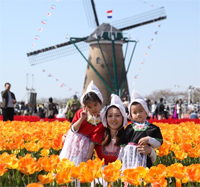 This festa is one of the largest tulip festivals in Kanto region as 670,000 tulips of approx. 100 different types and colors burst into bloom with wind mills from the Netherland on the background. During this fiesta period, traditional netherland costumes can be rented out. Inbanuma lake cruise are provided, tulip bulbs are sold, musical organ performance is made. In addition, many other joyful events are beld, including wind-mill Festival.
This festa is one of the largest tulip festivals in Kanto region as 670,000 tulips of approx. 100 different types and colors burst into bloom with wind mills from the Netherland on the background. During this fiesta period, traditional netherland costumes can be rented out. Inbanuma lake cruise are provided, tulip bulbs are sold, musical organ performance is made. In addition, many other joyful events are beld, including wind-mill Festival.
Photo by "Sakura City" HP (Only Japanese)
See more ->Sakura Tulip Festa official site (Only Japanese)- "Dondoree" of Aosuge area of Sakura City [14 January]
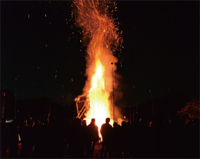 This event dates back to early Edo period. This is held at lunar New Year. In the evening of 14 January every year, this event is conducted at the so-called Dondoree Square of Aosuge district. "Dondo Burning" is the ritual conducted to send off the deity spirit of the year by burning the decorations used to welcome the deity spirit. When the bamboo burns and bursts, it creates "don" sound. This "don" sound and "harai(wiping)" are combined together and sounded like "dondoree" in the local dialect. When the burnt bamboo bends down toward the aosuge district, good harvest is expected. In this local district, it is believed that those who have the MOCHI grilled with this fire will get no cold in that year. Burned pine branch-made decorations on the gate is considered to prevent the evil spirit from entering into the house throughout the year.
This event dates back to early Edo period. This is held at lunar New Year. In the evening of 14 January every year, this event is conducted at the so-called Dondoree Square of Aosuge district. "Dondo Burning" is the ritual conducted to send off the deity spirit of the year by burning the decorations used to welcome the deity spirit. When the bamboo burns and bursts, it creates "don" sound. This "don" sound and "harai(wiping)" are combined together and sounded like "dondoree" in the local dialect. When the burnt bamboo bends down toward the aosuge district, good harvest is expected. In this local district, it is believed that those who have the MOCHI grilled with this fire will get no cold in that year. Burned pine branch-made decorations on the gate is considered to prevent the evil spirit from entering into the house throughout the year.
- Carp Streamers' group swim [29 April through 5 May]
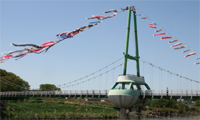 Over the Yurayura Bridge of Shinkawa River, About 100 carp streamers donated by the general public and "Banners simbolizing the Ascending Eels in the economic world" fly high up in the sky over the river, wishing for the economic recovery.
Over the Yurayura Bridge of Shinkawa River, About 100 carp streamers donated by the general public and "Banners simbolizing the Ascending Eels in the economic world" fly high up in the sky over the river, wishing for the economic recovery.

 Sitemap
Sitemap

